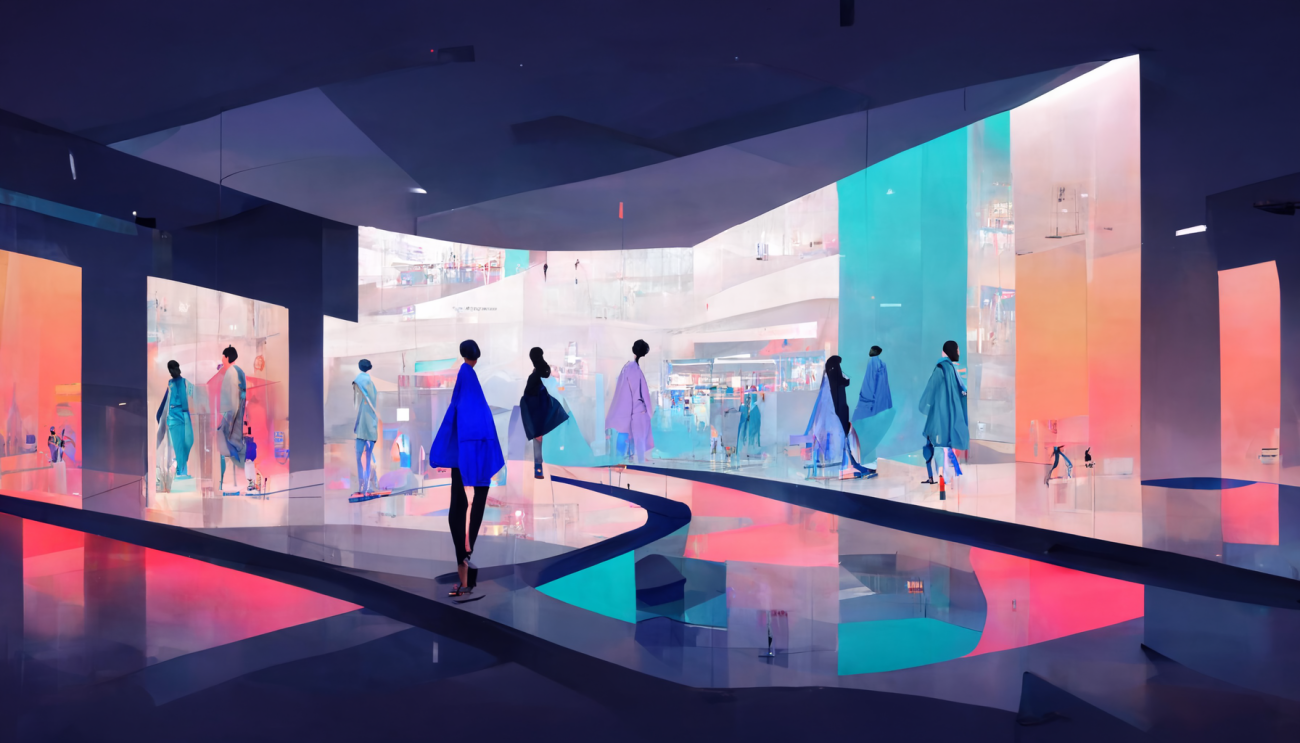
How to sell something you don’t have? Endless aisles can solve the problem of empty shelves
Endless aisles is a concept in which retailers offer consumers the possibility to shop online in physical stores, with the goods delivered to their doorstep or a store closer to home. This concept gives merchants the flexibility to sell products that they don’t carry or that are out of stock.
Endless aisles is a part of omnichannel or unified commerce that also includes other ways to combine sales channels, such as click & collect and omni refund. If you are new to endless aisles and wondering how your business could benefit from this, here are some examples.
- Stock shortages currently occur more often due to component shortages and challenges in logistics. With the endless aisles strategy, you will not lose the deal to the competition even if you are temporarily out of a product.
- You can optimise the size and floor area of your store by keeping big and slow-selling items in warehouses.
- In many cases, if you get the customer to shop in your online stores, it gives you a lot more insight into customer behaviour compared to purchases made in a physical store.
- Endless aisles bring flexibility to your customers, and this equals good customer service and increased customer loyalty.
In this blog post, you’ll learn the basic idea of the endless aisles concept, how to set it up and what you need to consider. I will also give you some use case examples.
Four ways to set up endless aisles in a physical store
The endless aisles concept can be used in showrooms and sales events, but it is also easy to implement in your existing store. There are many ways to bring a webshop into your physical store, but here are three common and handy ones.
One way to do it is placing a self-service kiosk in some convenient location in the store. This lets consumers make purchases by themselves at the kiosk, using a payment terminal configured for the purpose.
The good thing about this example is that buyers can shop at their own pace and you don’t need any staff for the actual sale.
Another way to serve consumers with this concept is by instructing customers to open your webshop on their phone or tablet. You can direct them to the right webpage with a QR code, and you can lend devices to customers who don’t have their own.
If you provide the device, it could be a good idea to take payment via a separate payment terminal or SoftPOS (Software Point of Sale) solution to avoid any security issues when entering payment details into the device. SoftPOS is a technology using mobile devices as contactless payment terminals. In this use case, your personnel can assist the customer with the purchase and also do some upselling at the same time.
The third possible setup is paying for webshop purchases at the normal cash register like any other purchase. You can make it easier for the customer with different arrangements, such as using QR codes and mobile applications to support the process.
And lastly, it is also possible to send an email or other message to the consumer when they visit your store, so they can make the actual purchase later when convenient. You can still give the credit for the sales effort to the right person. You can also boost sales on social media by encouraging customers to make the actual purchase. For example, you can generate a pre-filled shopping basket that the customer can purchase with one click. An assisted shopping process is also effective when a customer asks for more information about a product.
Be precise with merchant IDs, refunds and inventory
There are a few things you need to be careful about when setting up the endless aisles concept. First of all, check with your service provider that the right merchant IDs are used in the right place. For example, each physical store needs to be differentiated at this level.
It’s also important to make sure that possible refunds are handled in the proper way according to regulations and other rules and practices.
And last but not least, it’s extremely important to be on top of your sales volumes and inventory. That way, you can prepare appropriately and avoid any disappointment to customers, for example in delivery times.
Tips for boosting sales and keeping the customer happy
In addition to the things we already talked about, there are a few other points that we should cover here. You can boost this sales channel with a discount if it’s seen as profitable. For example, if you save on logistics costs, it could be reasonable to favour delivery straight from the central warehouse instead of a physical store.
Another way to serve your customers could be to pick the products from a physical store later when they are back in stock. The store could send the customer a message when the goods are available. Customer satisfaction and reducing returns are also important considerations. Customers are less likely to return something they have seen or tried on.
It can also be a good idea to combine endless aisles with other omnichannel or unified commerce practices, like click & collect. That is the opposite of endless aisles – consumers buy the goods in a webshop and pick them up from physical stores later.
Another good omnichannel practice is omni refund, which lets merchants refund goods in another sales channel than the one where the original purchase was made.
And let’s not forget the importance of a comprehensive set of payment methods in both brick-and-mortar & eCommerce. Also make sure to pick the payment methods that your customers want to use. And since omnichannel is the way, being able to identify your customers in different sales channels is a bonus. One handy option of implementing an identification solution is to use tokens, which also increases the security of payment processing.
Could your aisles be endless?
There are a lot of possibilities in the endless aisles concept. The setup is quite easy, and there are a lot of potential positive outcomes, like extra sales, boosted conversion and more loyal customers.
So let’s continue the conversation and extend our aisles from the physical world to the virtual one and make shopping a bit more flexible for all of us.




